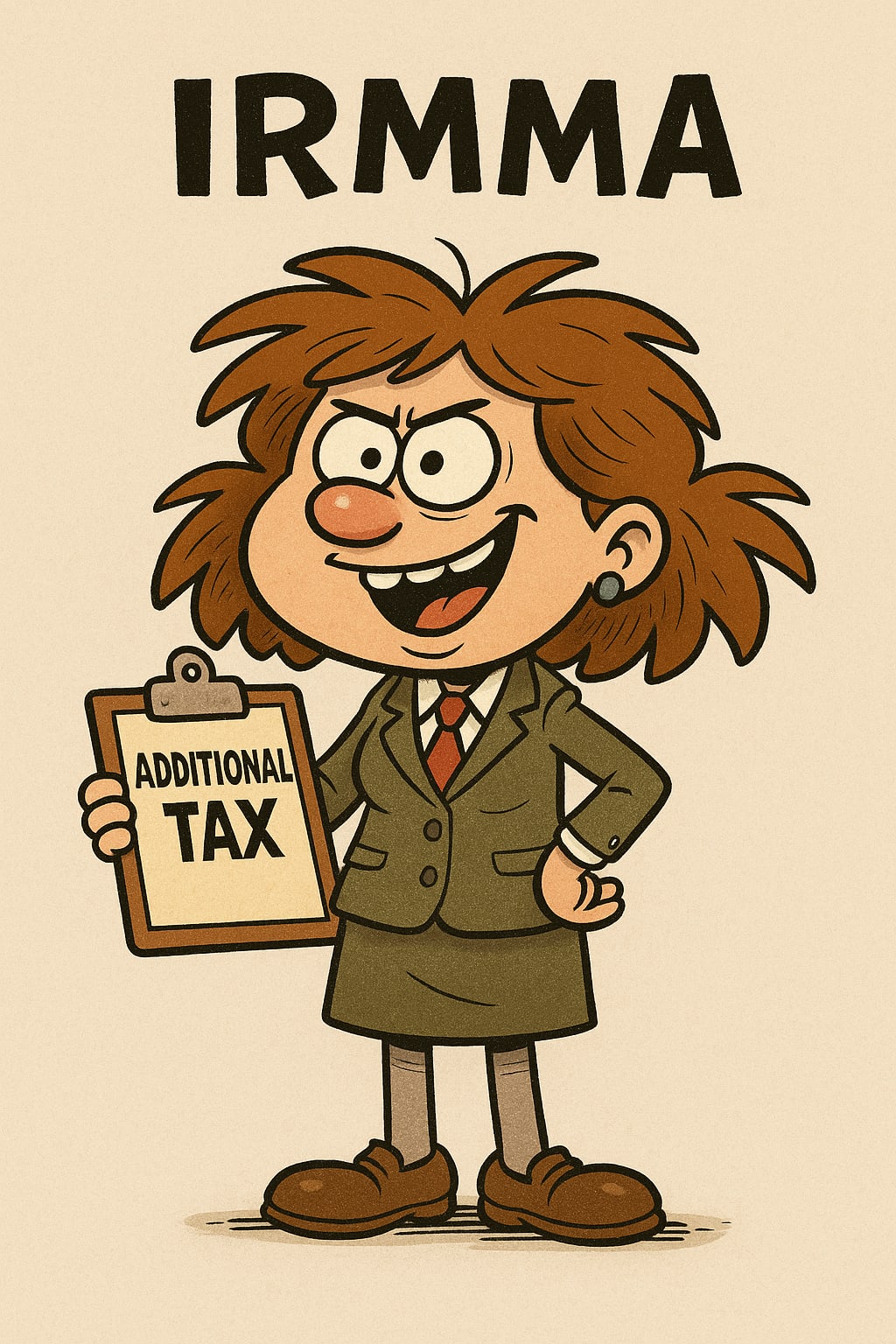Why Your Health Savings Account (HSA) Is a Secret Weapon for Tax-Free Retirement
How a HSA can help doctors dodge retirement tax surprises and create tax-free Income
One of the key messages from White Coat Investor is clear:
“Shelter your income now during your high-earning years using safe retirement vehicles like a 401(k) or cash balance plan.”
I completely agree—great advice!
But here’s what many of us forget:
Every dollar in those pre-tax retirement accounts will be taxed later.
In your 70s, you’ll be required to start withdrawing money from those accounts - and you’ll owe taxes on those withdrawals.
If your retirement income is large enough, you may also get hit with another form of “wealth tax”: IRMAA
Who is IRMAA?
She is not your auntie.
IRMMA stands for Income-Related Monthly Adjustment Amount. It’s a medicare surcharge for high-income retirees. Boo!!!!
In plain English:
The more income you report in retirement, the more you pay for the same Medicare benefits.
In other words, it’s just an extra tax on being wealthy and healthy.
So That Raises a Logical Question:
Is there a way to create tax-free income in retirement while minimizing the impact of IRMMA?
Yes—through the strategic use of a Health Savings Account (HSA).
What Is an HSA?
An HSA (Health Savings Account), authorized under IRC §223, is the only account in the U.S. tax code that offers all three major tax advantages:
Tax-deductible contributions
Tax-free growth
Tax-free withdrawals for qualified medical expenses
Think of it as a supercharged mix of a Traditional IRA and Roth IRA—but specifically designed for healthcare spending.
Who Can Have an HSA?
Not everyone qualifies. To contribute to an HSA, you must be enrolled in a High Deductible Health Plan (HDHP).
Not sure if your insurance qualifies?
Check your insurance documents - your benefits summary will clearly states if it’s an HDHP.
While your employer may help you open the account and fund the HSA through payroll, the account belongs to you. It’s portable - it follows you even if you switch jobs, retire or move to another state.
What Are the 2025 HSA Contribution Limits?
For tax year 2025, the IRS allows the following maximum contributions.
Individual coverage: $4300
Family coverage: $8550
Catch-up contribution (age 55+): Additional $1000
It may not seem like life-changing money - but when invested and left to grow, the long-term value can be significant.
How Does an HSA Work?
If you incur a qualified medical or dental expense — like for a root canal, prescription meds, or physical therapy — you can:
Pay out of pocket
Save the receipt
Submit it to your HSA provider
Get reimbursed - tax-free
That reimbursement comes from money that was
Deducted upfront (tax-free going in)
Grew tax-free over time
Withdrawn tax-free
That’s a triple tax benefit - the only one of its kids in the tax code.
Example: Have Your HSA Growth Pay For Your Root Canal
Let’s say you contribute $5,000 to your HSA in Year 0.
You invest it in an S&P 500 index fund, earning an average 10% annual return.
By Year 7, your HSA has grown to about $10,000.
In Year 8, you need a $5,000 root canal.
You pay out of pocket, save the receipt, and then submit it to your HSA.
You get reimbursed $5,000 —tax-free.
Here’s the beauty of it:
You still have $5,000 left in your HSA, thanks to investment growth.
You just paid for your dental work with tax-free market gains!
Why This Matters for High-Income Professionals
Doctors rarely benefit from itemizing medical deductions.
Why?
Because medical expenses are only deductible if they exceed 7.5% of your Adjusted Gross Income (AGI).
If you earn $400,000, the first $30,000 of medical costs (7.5% of $400k) don’t count towards a itemized deduction.
But with an HSA, every qualified expense is effectively 100% deductible - regardless of your income level.
That’s huge advantage for high-income professionals.
And that’s not all -
An HSA can also create tax-free income in retirement.
Tax-Free Retirement Income: Pay Now and Save the Receipt , Reimburse Later
Let’s say you have bad teeth (no judgment!) and end up paying $5,000 in dental expenses every year for 30 years.
You could get reimbursed each year —but instead, you
pay out of pocket
Save the receipts
Let your HSAS contributions grow untouched
You invest your $5000 annual HSA contributions in a diversified fund.
At a 10% annual return, your HSA could grow to $822,000 after 30 years!
In retirement, you submit $150,000 worth of saved dental receipts and withdraw that amount tax-free.
You still have $672,000 left in the HSA - perfect for future medical needs, including luxury nursing home care. “Livin’ la vieja vida loca!”~~~
As long as you’ve incurred enough qualified medical expenses, you can withdraw the entire amount - completely tax-free.
Then take that World Cruise. You’ve earned it.
And the best part?
There’s no time limit on when you reimburse yourself - just keep good records.
Bonus: No Impact on IRMAA
Once you’re in your 70s, Required Minimum Distributions (RMDs) from your pre-tax 401(k) and IRA increase your taxable income, which can push you into higher IRMMA brackets.
But HSA reimbursements?
Not taxable (if used for qualified expenses)
Don’t count as income
Don’t trigger the medicare surcharge (IRMMA)
This means your HSA allows you to cover healthcare costs without increasing your tax bill or medicare premiums.
Tax-free income that helps keep you under IRMMA thresholds? That’s a stealthy tax win.
Bottom line:
If you’re a doctor planning for retirement, don’t overlook the HSA.
To contribute, you must be covered by a qualified High Deductible Health Plan (HDHP) - so check your health insurance.
To maximize the benefits:
Let your HSA grow—don’t drain it early.
Keep every medical and dental receipt— from root canals to prescriptions to physical therapy.
Treat it like a stealth Roth IRA for healthcare.
Let your money grow tax-free inside the HSA.
Then, in retirement, cash in those receipts for tax-free reimbursements.
Use that money to cover care - or to create unforgettable memories during your golden years.
Disclaimer: click here





